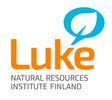
Cereal crops sufficient to enable exporting
After two years of record harvests, the grain crop diminished by ten per cent. Barley, oats and wheat crops declined, while the rye crop went up by almost 45 per cent from 2014.
Well over half of all grains – 2.3 billion kilos – is used on farms, mainly as feed for domesticated animals. The rest of the harvest – 1.4 billion kilos – goes to other uses: to the Finnish food and beverage industry and to export markets.
Large wheat crop – poor quality
The wheat crop was good in terms of quantity, nearly one billion kilos – the second largest during the one hundred years in which statistics have been compiled. However, the baking quality of wheat was poor. Only around 18 per cent of the harvest exceeds the criteria for baking quality. The last time that the quantity of baking-quality wheat was this low was seven years ago.
Pea and broad bean crops nearly doubled
Both pea (25 million kilos) and broad bean (27 million kilos) crops grew by as much as 25–75 per cent from the previous year. The rise was driven by the doubling of the area under peas and the increase of more than 50 per cent in the area under broad beans. Both areas grew to the level of sugar beet, i.e. to more than 10,000 hectares. There is demand for domestically produced protein both as food and feed. It is estimated that only 15 per cent of the feed protein sources for domesticated animals is produced in Finland.
Record crops of cereals harvested green
The majority of the around 650,000 hectares under fodder grass is harvested for silage, while only one-sixth is harvested for hay. The silage yield grew by five per cent from 2014. The hay yield was average. Last summer, the area under cereals harvested green exceeded that under hay. Some 100,000 hectares of the area under cereals was harvested green for livestock feed.
Share of organic production continues to be low
Both in livestock and crop production, organic production accounts for one to two per cent, on average, for almost all products. Of the cereals, the share of organic production is the largest for rye. Around eight per cent of the rye crop for 2015, or a little over five million kilos, was organic. For peas and broad beans, the share of organic production was also larger than for other crops, 10–20 per cent.
Farms submit information dutifully
More than 95 per cent of the farms covered submitted information to the crop survey conducted every autumn by the Statistical Services of the Natural Resources Institute Finland. In 2015, information was requested from 6,000 farms involved in conventional cultivation and 600 farms involved in organic cultivation. On the basis of the sample information, the crop data for the most important field crops was calculated regionally for all of the approximately 51,000 farms in Finland. Preliminary crop statistics were published on 26 November 2015. The preliminary data were quite accurate, but the final crop statistics cover a larger number of cultivated plants.
More detailed information and tables related to the statistics are available in the Stat.luke.fi service:
Crop Production Statistics
Organic Production Statistics
For information on the quality of the grain harvest, see Evira’s site.
Contacts
Further information:
Researcher Anneli Partala, Luke, tel. +358 (0) 29 532 6803, firstname.surname@luke.fi
Data on grain quality:
Head of Unit Mirja Kartio, Food Safety Authority Evira, Unit of Plant Analysis, tel. +358 (0) 29 530 5090, firstname.surname@evira.fi
Links
About Luonnonvarakeskus
 Luonnonvarakeskus
LuonnonvarakeskusViikinkaari 9
00790 Helsinki, Finland
0295 32 6000 / +358 295 32 6000http://www.luke.fi
Subscribe to releases from Luonnonvarakeskus
Subscribe to all the latest releases from Luonnonvarakeskus by registering your e-mail address below. You can unsubscribe at any time.
Latest releases from Luonnonvarakeskus
Uusi tiedotetilauksesi vuoden loppuun mennessä/ Förnya dina pressmeddelandeprenumerationer före årsskiftet20.12.2017 14:13:33 EET | Tiedote
Luonnonvarakeskus (Luke) vaihtaa vuoden 2018 alusta alkaen mediatiedotteiden lähetysjärjestelmää. Muutoksen yhteydessä pyydämme teitä uusimaan tiedotetilauksenne. Tiedotteita voi tilata aihealueittain tai halutessaan voi tilata myös kaikki Luken tiedotteet. Tilaa Luken tiedotteet lomakkeella >> -- Från och med början av 2018 skickas Naturresursinstitutets (Luke) pressmeddelanden från ett nytt system. I samma veva ber vi er att förnya era prenumerationer på Lukes pressmeddelanden. Lukes pressmeddelanden kan beställas enligt ämne eller man kan också prenumerera på alla Lukes pressmeddelanden. Fyll i blanketten och prenumerera på Lukes pressmeddelanden >>
Luken e-vuosikirja kokoaa yhteen maatalous-, metsä- ja kalatilastot18.12.2017 09:00:00 EET | Tiedote
Luken ruoka- ja luonnonvaratilastojen e-vuosikirja ilmestyy nyt kolmatta kertaa. Verkossa ilmestyvässä julkaisussa on koottu yhteen keskeisimmät biotalouden tilastotiedot maataloudesta, metsäsektorilta sekä kala- ja riistataloudesta.
Luonnonvarakeskuksen Tervon kalanviljelylaitokselta on löydetty kaloista IHN-virusta14.12.2017 17:05:15 EET | Tiedote
Luonnonvarakeskuksen (Luke) Tervon kalanviljelylaitokselta on löydetty IHN-virusta. Viruksen esiintyminen todettiin ensimmäisen kerran Suomessa Pohjois-Pohjanmaalla Iissä sijaitsevasta merialueen kalanviljelylaitoksesta (Eviran tiedote 30.11.2017).
Lohen poikkeuksellisen korkea hinta notkautti kalan kulutuksen kasvua14.12.2017 13:00:33 EET | Tiedote
Lohen hinta on viimeiset kolme vuotta pysytellyt poikkeuksellisen korkeana. Korkean hinnan vuoksi kalan kulutuksen kasvu taittui Suomessa väliaikaisesti. Kirjolohen kysynnän kasvu ulkomailla avasi toisaalta uusia vientimarkkinoita.
Suurin osa maatalousmaasta peitteisenä talvella14.12.2017 09:00:00 EET | Tiedote
Luonnonvarakeskuksen (Luke) ennakkotietojen mukaan yli 40 prosenttia käytössä olevasta maatalousmaasta oli viljelykasvin peitossa talvella 2015–2016. Vajaata viidennestä peittivät kasvinjätteet tai sänki ja kymmenesosa oli kevennetysti muokattua. Yhteensä lähes 80 prosenttia maatalousmaasta oli kasvipeitteistä tai kevennetysti muokattua. Runsas 20 prosenttia maasta oli paljaana.